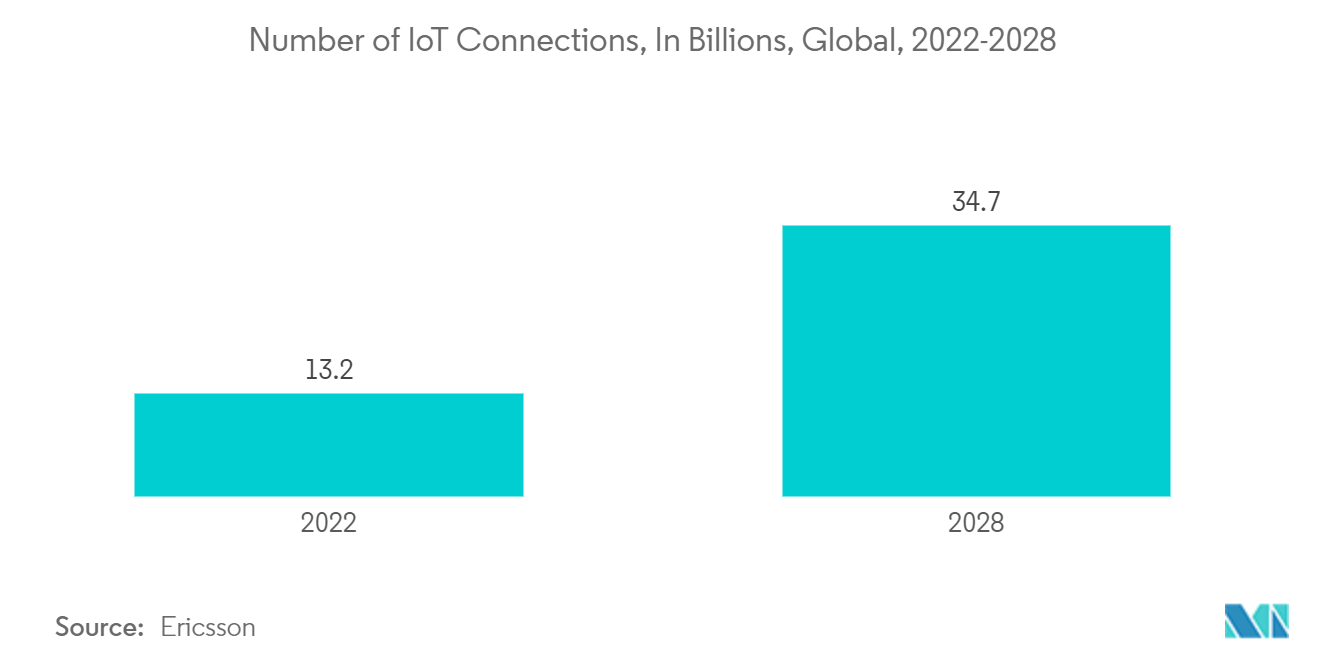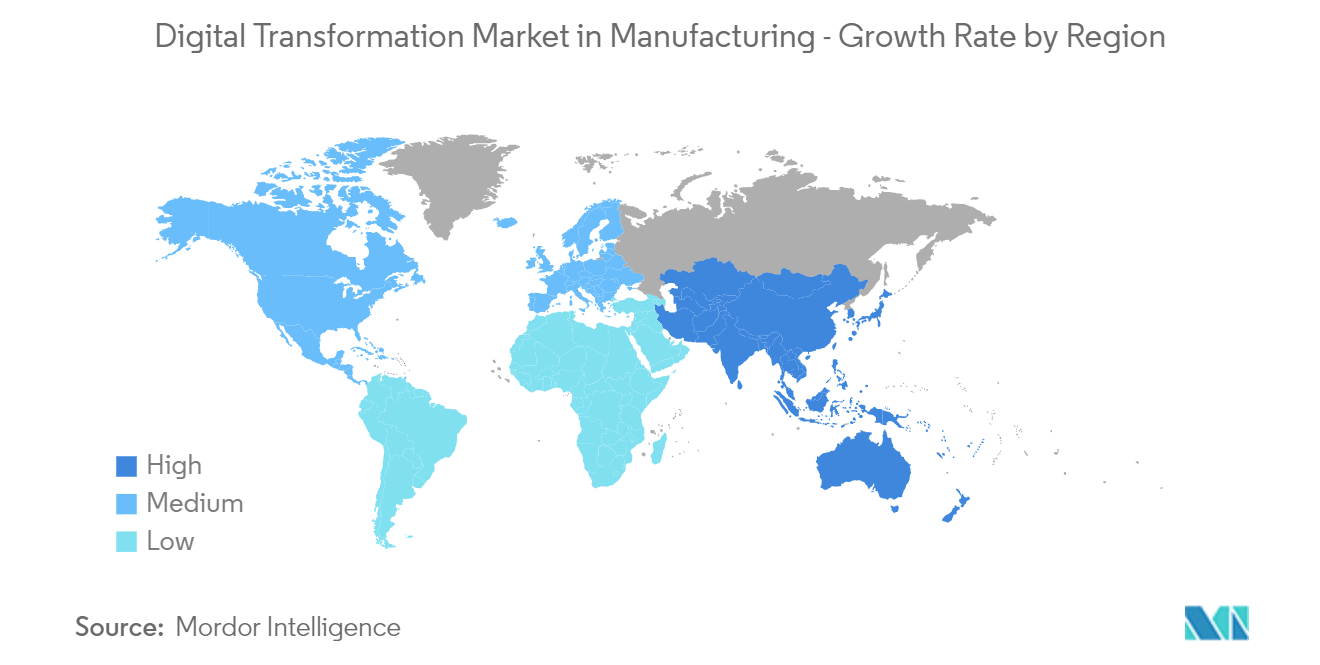Market Trends of Digital Transformation In Manufacturing Industry
Internet-of-Things (IoT) to Hold Major Market Share
- The Internet of Things is a key driver of digital transformation that connects physical devices and sensors to the Internet, creating smart and connected systems. This connection enables real-time data collection and analysis, improving operational efficiency, better decision-making, new business models, and increased automation across various industries.
- Manufacturing businesses are concentrating on IoT as the critical enabler to augment digital transformation and unlock operational efficiencies. It facilitates the collection and analysis of real-time data, enabling organizations to make informed decisions and optimize manufacturing and related processes.
- The Internet of Things impacts organizations' digital transformation by creating new investment opportunities, improving customer experience, increasing productivity, lowering operational costs and efficiency, and empowering business models. It became essential for industries, including healthcare, government and education, security, communication, and others, owing to numerous benefits that could act as a competitive factor in the coming years.
- The market is expanding positively as IoT technology is increasingly used in manufacturing. The Internet of Things (IoT) is driving the next industrial revolution of intelligent connectivity as the traditional manufacturing sector transforms digitally. It is transforming how businesses handle the increasingly complex systems and machines they use to increase productivity and minimize downtime. According to Ericsson, ioT connections are anticipated to increase from USD 13.20 billion in 2022 to USD 34.70 billion by 2028 at a CAGR of over 18%.
- Overall, manufacturers are optimizing processes, improving productivity, and reducing costs by leveraging IoT technologies. It is to gain a competitive edge in the rapidly involving manufacturing industry across the globe and driving digital transformation in the manufacturing sectors. The market's growth is likely to continue with the development of the manufacturing industry and the adoption of IoT over the forecast period.

Asia-Pacific to Register Fastest Growth
- China's manufacturing sector saw a digital revolution in recent years. The Chinese government actively supports digital technologies in traditional manufacturing processes to increase production, efficiency, and innovation.
- China invested significantly in innovative technologies like robotics, IoT, Big Data Analytics, AI, and cloud computing technologies for smart manufacturing. With the help of these technologies, industrial processes can become optimized, and preventative maintenance is made possible. It significantly boosts productivity and lowers costs, boosting the market's growth opportunities.
- Japan is a significant provider of robotics and automation, and digital transformation is further driving their adoption. Advanced robots are used in various manufacturing processes for packaging, assembly, and material handling tasks. Automation helps improve efficiency, reduce errors, and enhance workplace safety.
- Moreover, Japan became a global leader in digital twin technologies creation and application in recent years. Digital twins are virtual representations of actual things, systems, or procedures that can be used for analysis, simulation, and optimization. They can enhance product design, lower costs, and boost manufacturing effectiveness. This technique is used in many industries in Japan, including manufacturing.
- The Indian government introduced "Make in India" and "Digital India" to encourage the manufacturing sector's digital transformation. These initiatives seek to make doing business easier, promote infrastructure and technology investments, and offer legislative support and incentives to hasten the use of digital technologies in manufacturing. Also, IIoT adoption is accelerating in the Indian manufacturing sector. IIoT offers real-time data collection, remote monitoring, and predictive maintenance by integrating machines, sensors, and devices. It aids producers in streamlining operations, decreasing downtime, and enhancing overall equipment performance.
- In the Asia-Pacific region, robotics and automation technologies are rapidly being widely adopted in the manufacturing industry. Advanced robots are increasingly used in assembly lines, material handling, and other repetitive operations to increase efficiency, productivity, and product quality. Automation enables industries to respond rapidly to shifting market demands while lowering labor costs and improving precision.


